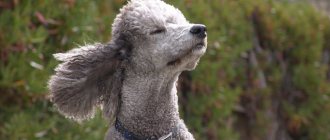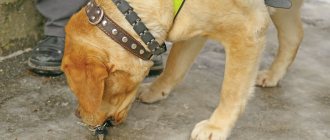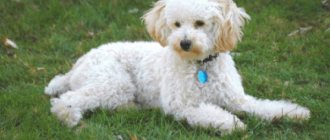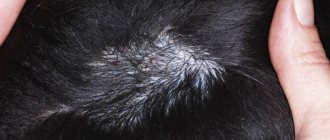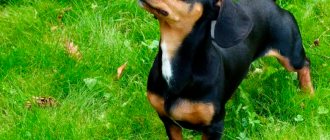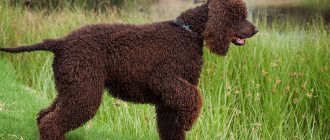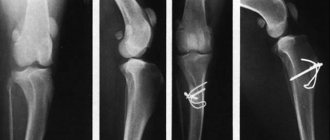The poodle is one of the oldest types of dogs. It is believed that all dogs originate from the wolf, but the structure of the paws of the poodle is very different from that of the wolf, so its origin is somewhat of a mystery.
Images of dogs similar to poodles can be found on ancient ceramics. Similar images are found on objects from the time of the Roman Empire.
There are a lot of portraits of a poodle in European painting; such famous masters of the brush as Rembrandt and Durer willingly painted it.
The poodle was always close to the person. In the Middle Ages, poodles accompanied traveling artists and took part in performances. Poodles helped search for the wounded in the war, provided communications there, and even searched for mines.
It was also used as a hunting and herding dog. However, nowadays this dog has become purely decorative, bringing joy to people simply with its appearance, good disposition and faithful love.
The first dog lovers' clubs were founded at the end of the 19th century. At the same time, their detailed descriptions began to be created - the so-called standards. In 1936, the French standard began to be considered official for poodles. But in the USA, for example, their own continues to operate.
Varieties of Poodle
Poodle breeds are differentiated by their size and body structure. There are four main options:
- Big poodle. It is also called royal. Height is 45-58 cm. A serious dog to handle.
- Medium poodle (aka small). It is a smaller copy of the big one. Height 35-45 cm.
- Miniature Poodle. Height 28-35 cm. An even smaller version of the poodle, ideal as a pet.
- And finally, a toy poodle, up to 28 cm tall, a real living toy. There is no official standard for them yet.
Based on their coat type, poodles are divided into curly and corded. The curly poodle's coat evenly and thickly covers the entire body, curly in rings and curls. The corded one has wool twisted into long cords.
Appearance
Miniature and toy poodles weigh from 4 to 7 kg, with the weight of a male being slightly higher than that of a female; the royal one weighs about 22 kg, and the medium one – 12 kg. The weight of puppies depends on age: a 2-month-old poodle weighs 1.8 kg, at 3 months – 2.3 kg, and at 4 months – 4 kg.
Head
It is proportional to the body and has a slightly elongated shape, while looking quite massive. The muzzle is also elongated, but not very sharp, there is a slight narrowing near the nose. Lips are dry and tightly closed. The nose is large, with well-developed nostrils, its color matches the general color of the dog. The cheeks practically do not stand out, as they fit quite tightly to the cheek bones.
Eyes
Slightly slanting, almond-shaped, but not convex. Representatives with apricot, grayish, white, and black colors have brown or black eyes with a blue tint, which creates an interesting visual effect. But specimens with brown fur may have only brown eyes, sometimes with an amber tint. The expression in the eyes is playful and inquisitive, because the dog understands much more than it can express.
Ears
They are long, hanging, set high. Closer to the bottom they widen, and at the tips the rounding is clearly noticeable.
Thick hair grows along the entire length of the ears, which comes in beautiful, soft curls.
Jaws
Quite strong, scissor bite. The teeth are straight, white, and fit together well.
Torso
Its length is greater than the width at the withers, but in general the body is proportional: a well-developed wide chest, a proud carriage of the head, oval-arched ribs, a straight back line, a strong lower back with well-developed muscles, toned groin and abdominal muscles.
Read Temperament and standard of the Polish Podgalian Shepherd Dog (+ reviews from owners)
Neck
It has a medium length, is proportional, and has a slight bend at the back of the head.
Tail
Thick at the base and slightly curved upward. Its length can be natural or shortened (by ½ or 1/3). In a calm state, the tail is usually lowered; when walking and running, it is directed upward and slightly sloping to the side.
Paws
The front ones are absolutely straight, parallel, graceful, but at the same time muscular. The pasterns are strong, but not overly massive. Developed muscles are also clearly visible on the hind legs, especially on the hips. From a distance they appear completely straight, but upon closer inspection the bend in the hock and stifle joints is noticeable. The paws themselves are oval, medium-sized, the toes are noticeably bent to the ground, with thick and dense pads, and there are swimming membranes between them. The color of the claws is usually determined by the coat and ranges from black to pink.
Wool
Thick, lush and beautiful. This is the calling card of any poodle. Wool can be either curly (the structure resembles a sheep's fleece, differs in elasticity and volume) or corded (thin hairs are collected in a kind of “cords”, the length of which must be at least 20 cm). The longer they are, the higher the chance of winning a prize at the exhibition. This type of fur does not need to be combed, but is gathered over the ears with soft elastic bands into funny ponytails.
Color
The standard presented by the FCI specifies black, brown, apricot, as well as white, gray and red. The coat color is uniform; special markings are not allowed. A beige shade, as well as any shade lighter than it, is considered incorrect. If we talk about individual colors, then gray should not be too light or turning into black, brown cannot be cold (only a deep, dark shade), and apricot color should not coincide with red.
Description and color of the poodle
The Poodle is a dog of medium height, square format and harmonious build. They have high, strong limbs, a proudly set neck and a beautifully set head. Small varieties are more elegant.
The muzzle is straight, slightly pointed, the forehead is flat, the ears are hanging, of medium length, the eyes are oval, small, slightly slanting. The teeth are strong and white.
The dog's movements are light and elastic. This is a strong, active animal, sometimes overly excitable.
Until the mid-20th century, there were only three colors of poodles: black, white and brown. In 1950, silver-gray dogs appeared (they are born black, but then change color), apricot-colored dogs, and two-color dogs (the so-called “harlequins”).
Poodle character
The poodle (of any size) is unusually friendly and good-natured. He quickly becomes attached to his owners, loves all kinds of games and pranks (children especially love him for this). Has a tendency to protect and protect, even being initially smaller than the enemy.
The Poodle is a very attentive dog. He is an excellent listener, always ready to support his interlocutor.He is easy to train, quickly remembers commands, but is prone to cunning and can use them to his advantage.
Children who grow up with a poodle gain a wonderful experience of responsibility and develop a lifelong love for all living things. For older people, caring for a cheerful and non-aggressive dog will help them keep themselves in good shape.
Characteristics and description of the breed
Aggressiveness
Poodles are completely devoid of aggression, and their behavior is usually good-natured. They get along easily with other pets and do not seek conflict.
Activity
These dogs are distinguished by their energy, mobility and love for a variety of active games. You can play ball with them, run, jump, go hiking and on picnics. After a good walk and fun games, a pet can happily lie on the sofa with its owner, but this is not its main pastime.
Training
Poodles are very smart animals that remember commands well and always try to please their owner. However, due to their intelligence, dogs often evade training.
You should not overload your pet, as one hour of training a day will be enough to achieve excellent results.
Shedding
The molting process is almost invisible to others. By 8-10 months, coat change reaches its peak. With timely, careful combing, problems will not arise.
Another good news is that poodles’ fur does not smell like a dog.
Need for care
Poodles are very clean and require careful grooming. They need to be regularly bathed, combed, cut, and also monitor the condition of their ears and teeth.
Friendliness and attitude towards children
These dogs simply adore children and become loyal friends and even caring guardians for them. The desire to take care of someone is part of this dog's herding nature. When leaving a child with a poodle, you don’t have to be afraid that the animal will behave inappropriately.
Health
In general, representatives of the breed are healthy dogs. Sometimes problems arise with the gastrointestinal tract, liver, eyes, and ear infections develop.
The pet requires careful care and a balanced diet.
Attitude towards loneliness
Poodles are exceptionally sociable dogs and love the company of people. To prevent your pet from getting bored and sad, you should not leave him alone for a long time.
Maintenance cost
These dogs require attention and certain expenses (food, vitamins, grooming, veterinary services, etc.).
Read Pomsky - Spitz and Husky in one dog
Intelligence
Poodles are incredibly smart and quick-witted, which allows them to take an honorable second place after border collies - the recognized intellectuals of the canine family.
Noise
Poodles usually bark when strangers come and from loneliness. In general, the dog is calm, but if the owner pays little attention to it, it can become restless.
Security qualities
Not too tall due to their friendly disposition. The dog easily makes contact with people who show a good attitude towards it, which can be taken advantage of by ill-wishers.
Lifespan
On average it is 12-15 years. In miniature poodles this figure increases until 18 years of age.
Training and education
Training poodle puppies begins with toilet training and a place to sleep. The first one is much easier. When the baby has explored the house well, he needs to arrange and show him a special place, for example, a plastic tray with newspapers.
The most popular dog names in alphabetical order with recommendationsShar Pei - history of the breed, character traits, care and possible problems + 87 photos
American Bulldog - history of the breed, appearance, specifics and characteristics, care (100 photos + video)
Poking your pet's nose into a puddle is a hopeless matter; you need to train it with patience. The situation is even stricter with the bed. Show restraint, otherwise the dog will easily occupy your own sleeping place.
The next task will be leash and collar training. Once your poodle gets used to wearing it, you can start practicing commands such as “near”, “place”, “sit”, “lie down”. Encourage the animal with words and treats - learning will go faster.
A poodle needs to be walked a lot. And always in company, because he loves communication. And a walk wouldn’t hurt the owner or hostess either.Poodle care and maintenance
Caring for and maintaining your pet is not difficult, of course it depends on the type. For example, a large poodle needs to be walked frequently, while others can get by with hour-long walks a day; it is advisable to play and run with the dog while walking, as they love activity.
Caring for a poodle consists of periodic examination of the ears, eyes, treatment of nails and paws, as well as grooming of the coat. It is customary to cut this breed. Fortunately, these dog haircuts are rich in a variety of haircuts, lion haircuts, modern, Scandinavian clip and others - for every taste.
Feeding
Review of Trainer food, reviews, price.
In essence, feeding a poodle is practically no different from feeding a dog of most other breeds, so we recommend reading the following articles on this topic:
- What to feed the puppy;
- What to feed an adult dog.
This is about a diet made from natural products, and if you want to feed your pet with ready-made food, then to choose a good one you need to read the following articles:
- Classes of dog food (find out the differences, list of brands, etc.);
- Super premium dog food - list of brands, reviews;
- List of holistic dog foods (as well as ratings and prices).
Diseases of the breed
Poodles have been found to be long-lived, with an average lifespan of 14-16 years. Now you can even do a test to determine what diseases your dog is prone to. Common diseases of poodles are diabetes, bloating, allergies, glaucoma.
Training
Training a poodle at home is not difficult, because it ranks second in the ranking of the most intelligent dog breeds in the world. The video below is proof of this:
Video lessons on training:
- How to teach a puppy basic commands (sit, lie down, come to me, etc.);
- How to train a puppy to vocalize on command.
Fashionable poodle
You need to cut your poodle's hair when he is thoroughly dry after bathing. Before this, you need to carefully comb it and remove tangles.
You will need a hair clipper, hairdressing scissors, nail clippers, etc. So think about it - wouldn’t it be better to entrust this task to a specialist? Especially if you want to impress your friends with his fashionable hairstyle - such as Leo, Modern or Continental?
